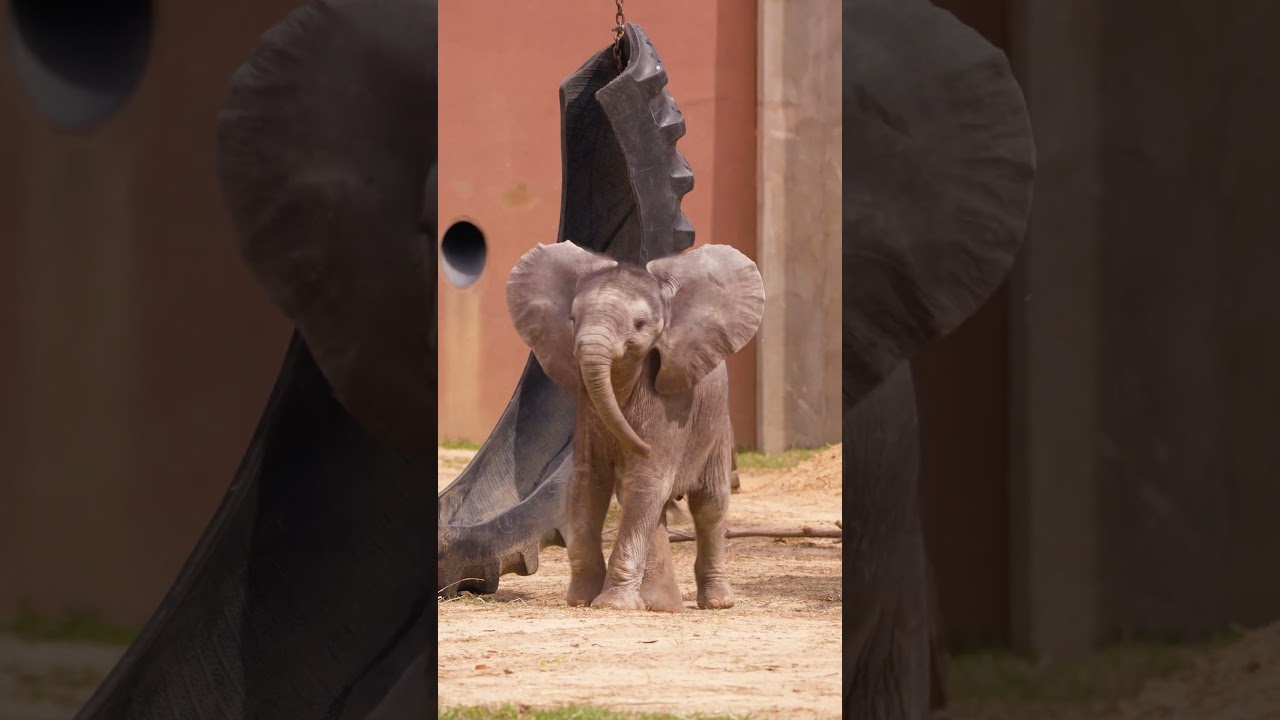– The significance of early outdoor experiences for animal development in captivity
– The role of zoo management in wildlife conservation efforts
– Integrating educational programs with zoo exhibits to foster environmental stewardship
– Challenges and advancements in creating suitable habitats within zoos for different species
Zoos play a critical role in wildlife conservation, offering refuge for endangered species and serving as educational platforms for the public. One noteworthy event in the life of zoo animals, particularly for those born in captivity, is their first time exploring an outdoor environment. This article delves into a specific case: Kirk’s first time outside, shedding light on its importance from a zoological perspective, the underlying zoo management strategies that facilitate such milestones, and the broader implications for wildlife conservation.
Kirk’s first excursion into the outdoors is more than a mere moment of exploration; it is a pivotal developmental milestone critical for his physical health, psychological well-being, and social skills formation. In the wild, animals encounter a range of stimuli that foster their instincts and behaviors. Replicating this experience, even in part, can significantly impact an animal’s adaptability and quality of life in a zoo setting. For instance, exposure to natural light supports vitamin D synthesis, while interacting with diverse terrains and objects can enhance their physical agility and cognitive functions. Therefore, zookeepers carefully plan these outdoor adventures to simulate wild elements, encouraging behaviors such as foraging, climbing, or social interaction.
Behind the scenes of Kirk’s first outdoor venture are layers of intricate zoo management strategies focused on wildlife preservation. Modern zoos are not just about public entertainment but are deeply involved in in-situ and ex-situ conservation projects. Zoo management teams work assiduously to design enclosures that mimic an animal’s natural habitat, considering everything from the substrate to vegetation to provide a stimulative and secure environment. This approach supports animals’ physical and mental health, promoting natural behavior patterns crucial for any future rewilding projects and breeding programs aimed at bolstering endangered populations.
Moreover, events like Kirk’s first outing are golden opportunities for zoos to engage visitors with educational programs highlighting the importance of conservation and the threats many species face in the wild. By narrating Kirk’s story, zoos can give a compelling insight into a species’ life, fostering empathy and a deeper understanding of wild animals’ existential challenges. This personal engagement stimulates public interest in conservation actions, potentially inspiring future generations of environmental stewards.
However, crafting suitable habitats for various species within the zoo’s limited space poses significant challenges. Different animals have distinct habitat needs that can change with the seasons, requiring dynamic management strategies to accommodate these changes. Advances in technology and zoo design have created more complex and enriching environments, but achieving a perfect replication of the wild is an ongoing struggle. Continuous research and exchanges with other conservation institutions are vital for improving these living spaces, ensuring they meet the residents’ needs as closely as possible.
Looking at Kirk’s first experience outside, we see a vivid illustration of the multifaceted efforts involved in zoo management and wildlife conservation. It symbolizes the dedication to providing a semblance of natural life for animals in human care, striving to balance educational and conservation goals with the well-being of individual animals. Understanding and supporting these endeavors are crucial in the collective mission to preserve the planet’s biodiversity. Through initiatives like Kirk’s first time outside, zoos continue to play an indispensable role in the global conservation landscape, highlighting the intricate relationship between humans and the natural world.
*****
Source Description
Sun’s out, trunk’s out! Kirk reached a new milestone this week by stepping into his outdoor exhibit for the very first time! ☀️🐘✨
As Kirk & Renee’s outdoor adventures are subject to weather conditions, indoor viewing remains an option whenever they’re not basking outside.
Kirk can be viewed on weekdays from 10 a.m. to 3 p.m., with Saturday and Sunday viewings extended from 9:30 a.m. to 3 p.m. Zoo members can enjoy early admission from 9 – 10 a.m. for Member Mornings.
Not a member? Save 15% on your membership with code tzig24 at checkout.
https://www.toledozoo.org/
#ToledoZoo #ToledoOhio #Zoo #ZooAnimals #Elephant #BabyElephant #Baby #BabyAnimal #CuteAnimals


